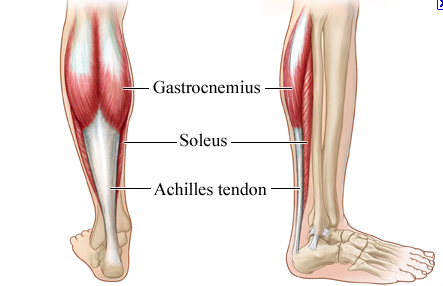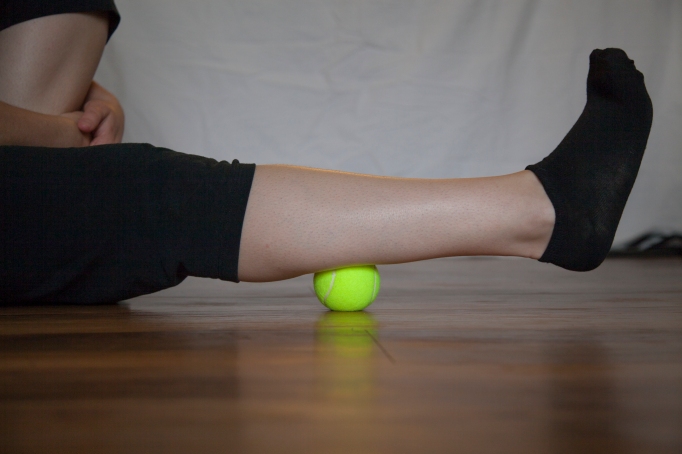This calf self massage technique is a really nice way to loosen up tight calves. I like to use this with clients who are runners and walkers, or play a sport that has them on their toes a lot, like tennis. It’s also super helpful for women who wear heels a lot – any height, but the higher they are, the more you’ll want to do this. All of these people spend a lot of time with their calf muscles contracted (shortened and tightened) and if we don’t do any work to balance this out, then those muscles “learn” to stay short and tight, leading to persistently achy muscles and increased risk of injury.
We can use the pressure provided by the tennis ball to stimulate our muscle and connective tissues to relax, just like having a deep tissue massage from a therapist. The intensity of the pressure will be determined by how tight the muscle is and how much pressure comes from the weight of the leg. Since most of our body weight is behind the calf, leaning forward slightly can increase the pressure somewhat. Lastly, a different kind of ball can also make a difference. A golf ball will likely feel much more intense, since it’s smaller and harder, and can get into the muscle a little more. Remember though, that more is not always better – you should never be more than eight out of ten on a one-to-ten scale. This will keep the muscle (somewhat) relaxed, so you get more out of the exercise, and you’ll be much more inclined to do it! 🙂
Exercise type: Self massage
What it does: Decreases tension through the large deep and superficial calf muscles of the lower leg.
How to:
– Place tennis ball under calf
– Let the ball sink into the muscle, or roll up and down or side to side a little (find what works best for you)
– Gently hold the toes up or let the ankle relax (find what works best for you)
– Avoid the back of the knee
– Stick with it for at least 30 seconds
You should feel: Pressure through the muscles of the calf. Aim for intensity of no more than eight out of ten on a 1-10 scale, and less than that is ok too.
Bonus point: Stretching your calves will be much more effective after decreasing the tension. Any calf stretch will do.
Related: Prevention Tactics for Shin Splints, Part 2
Disclaimer: This does not constitute medical advice, and not all exercises may be suitable for all people. Please consult your health care professional if you are unsure whether these exercises are right for you. If these exercises increase pain or any other symptoms, please stop immediately and consult your health care professional. For best results, get your doctor, physical therapist, and personal trainer/exercise coach talking for a united approach – as well as your chiropractor and massage therapist if you see these. To find out who I refer to in the Alexandria area or the rest of Northern Virginia, please get in touch.

